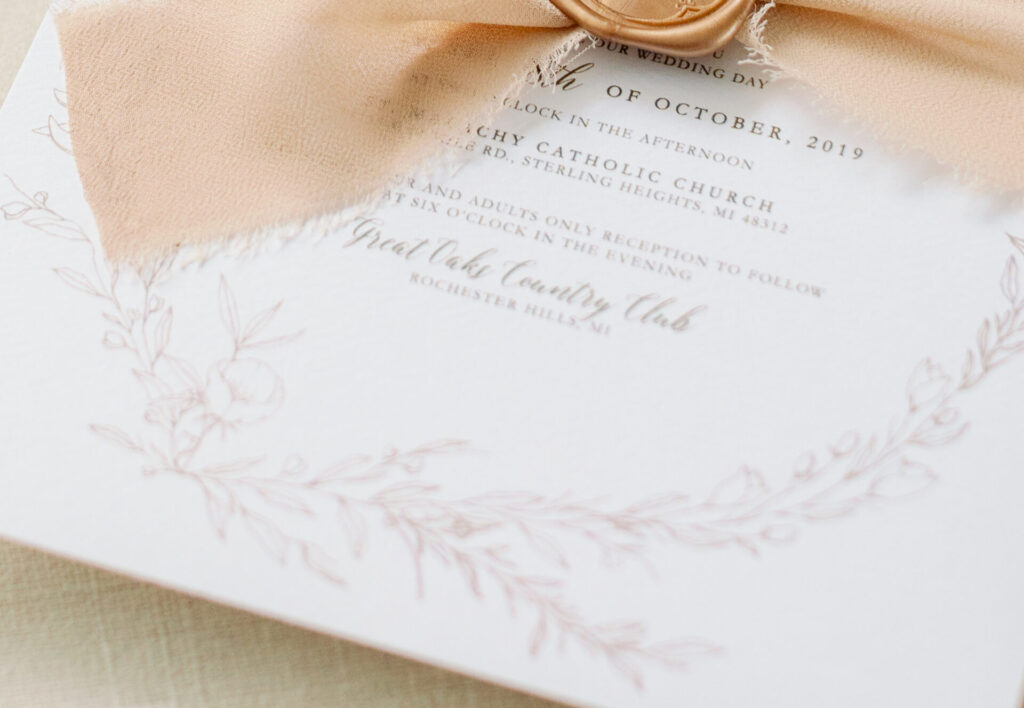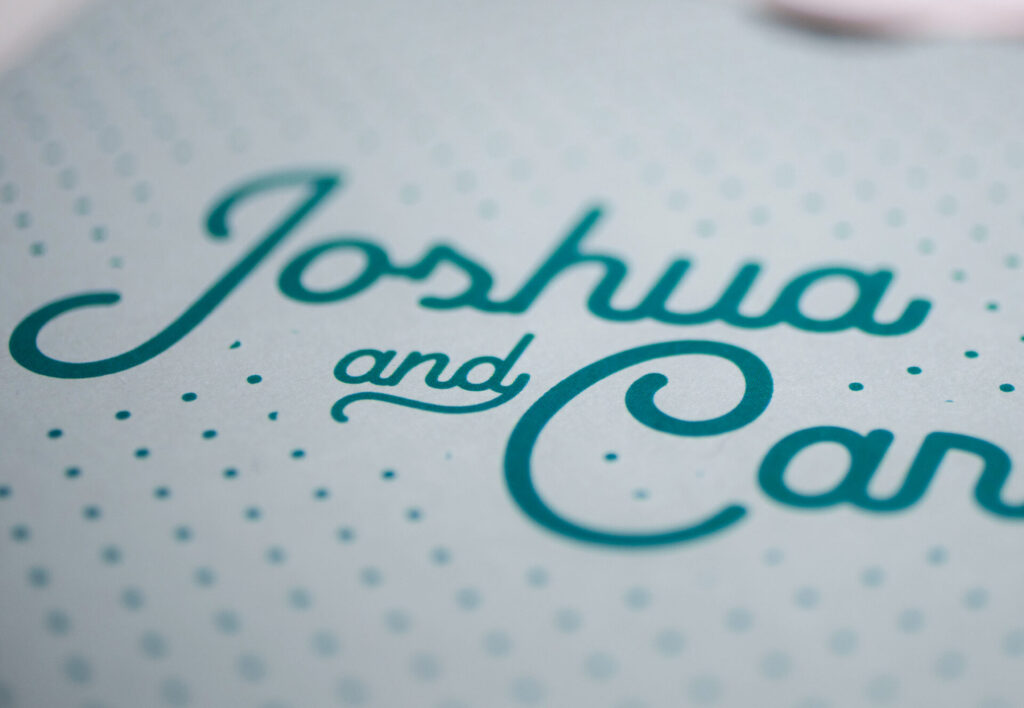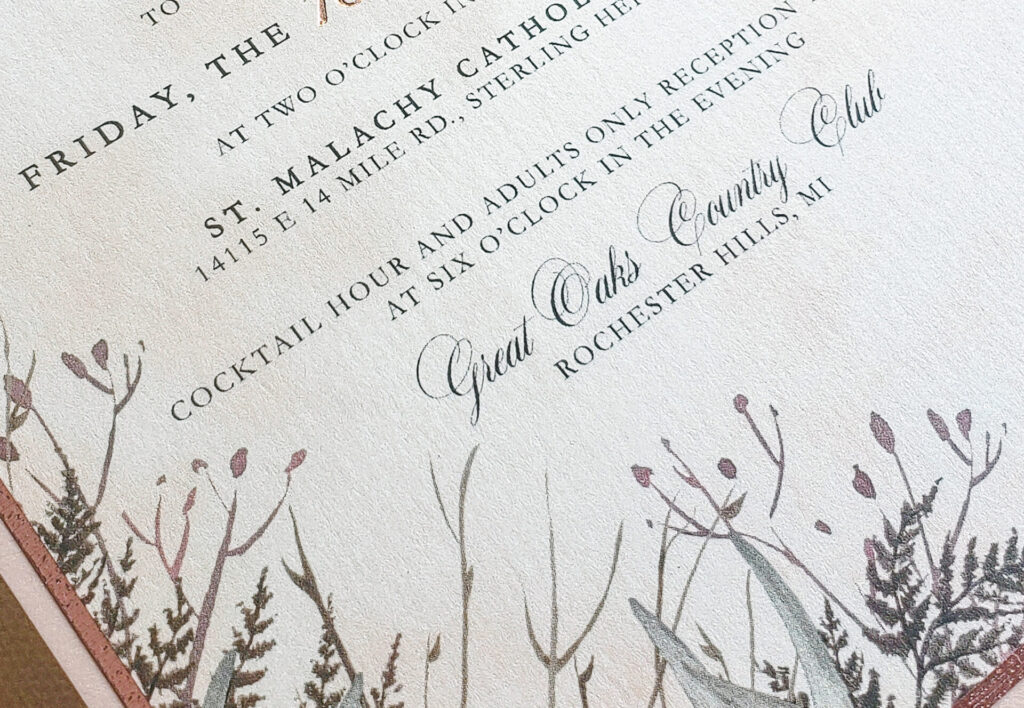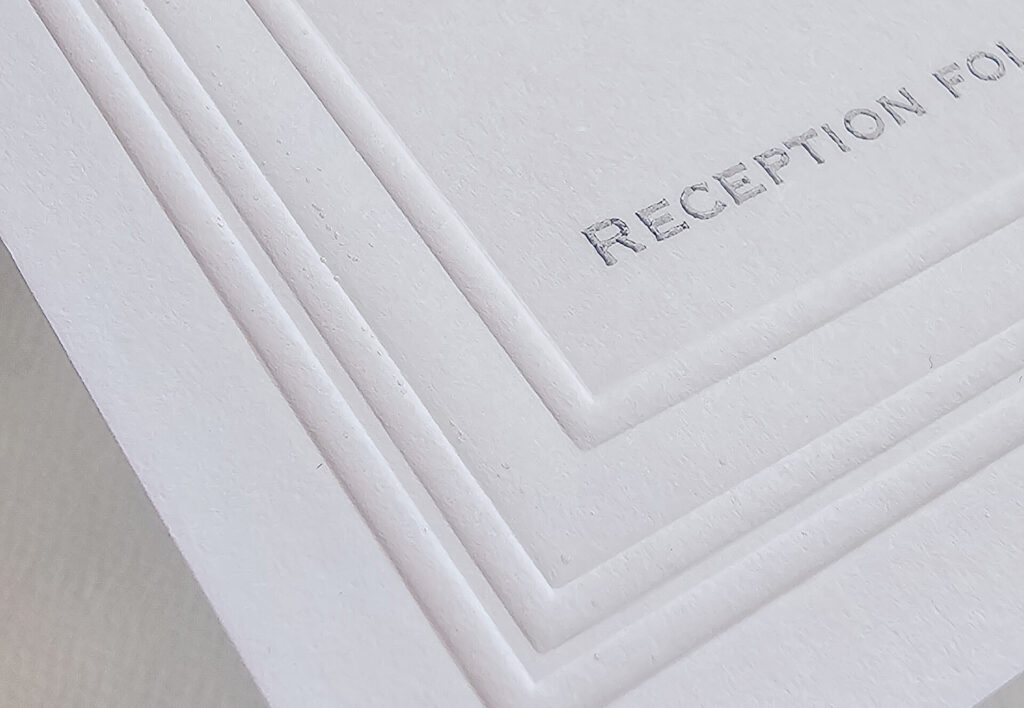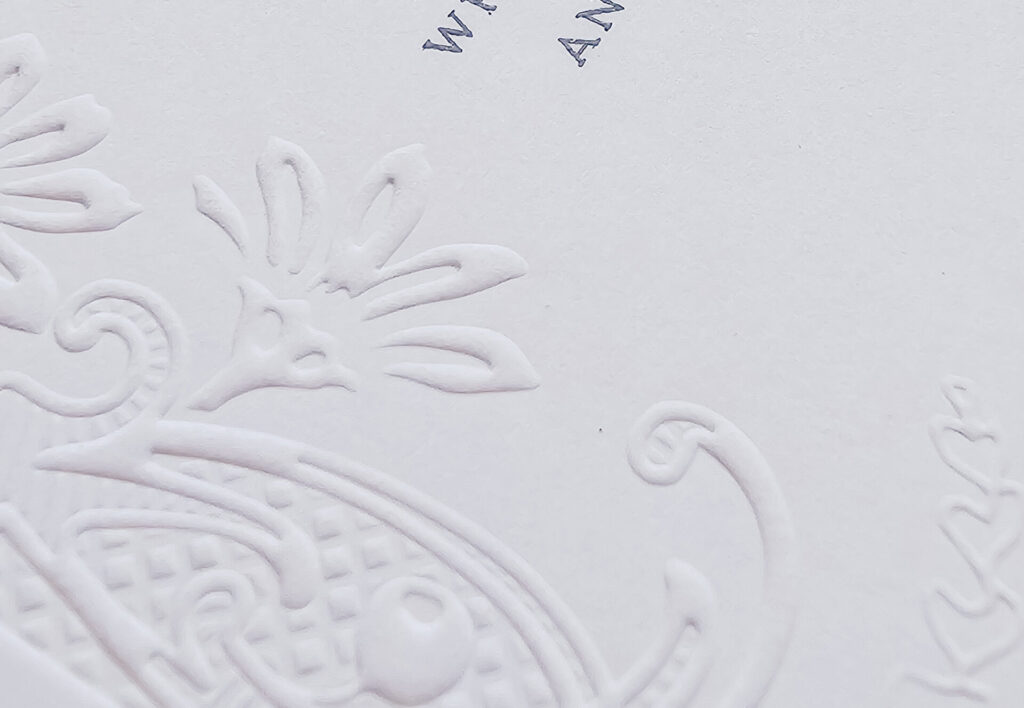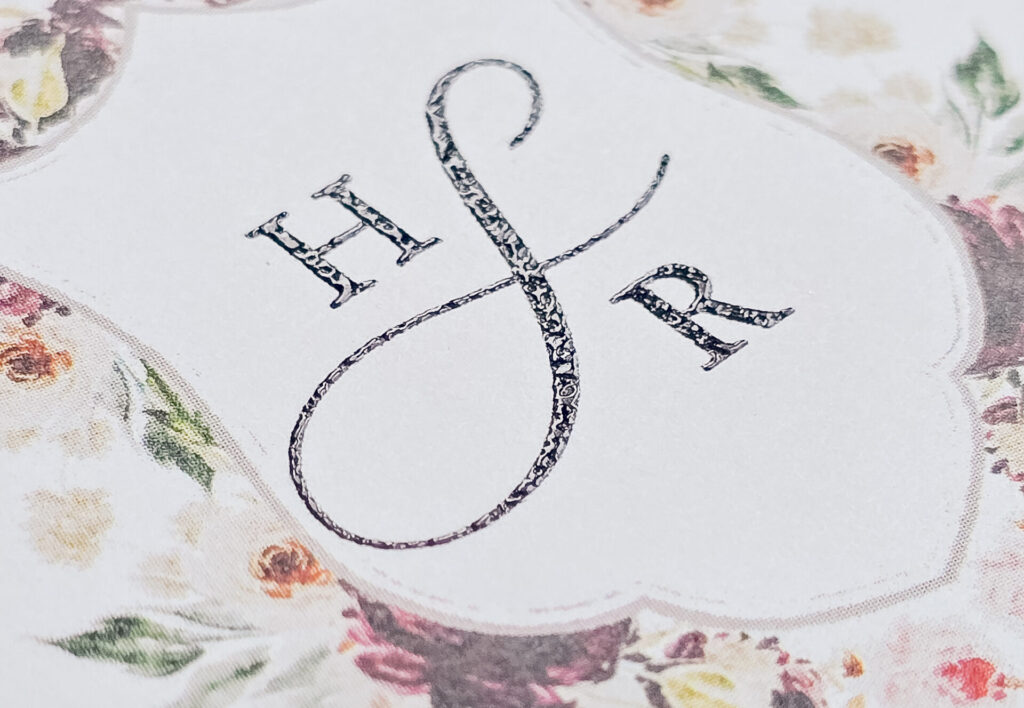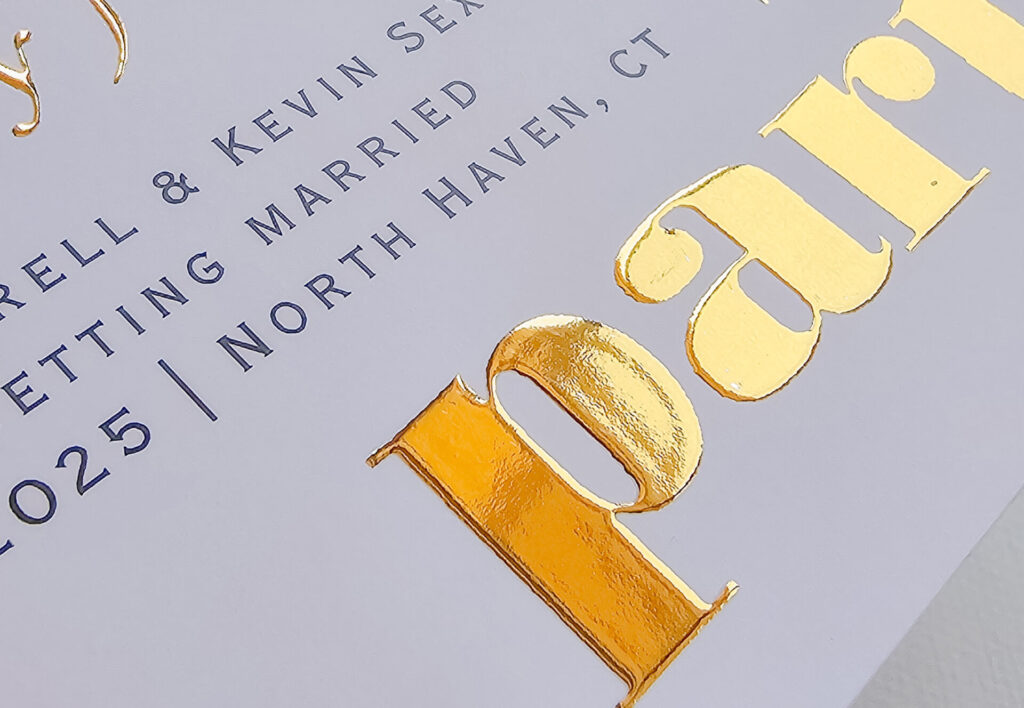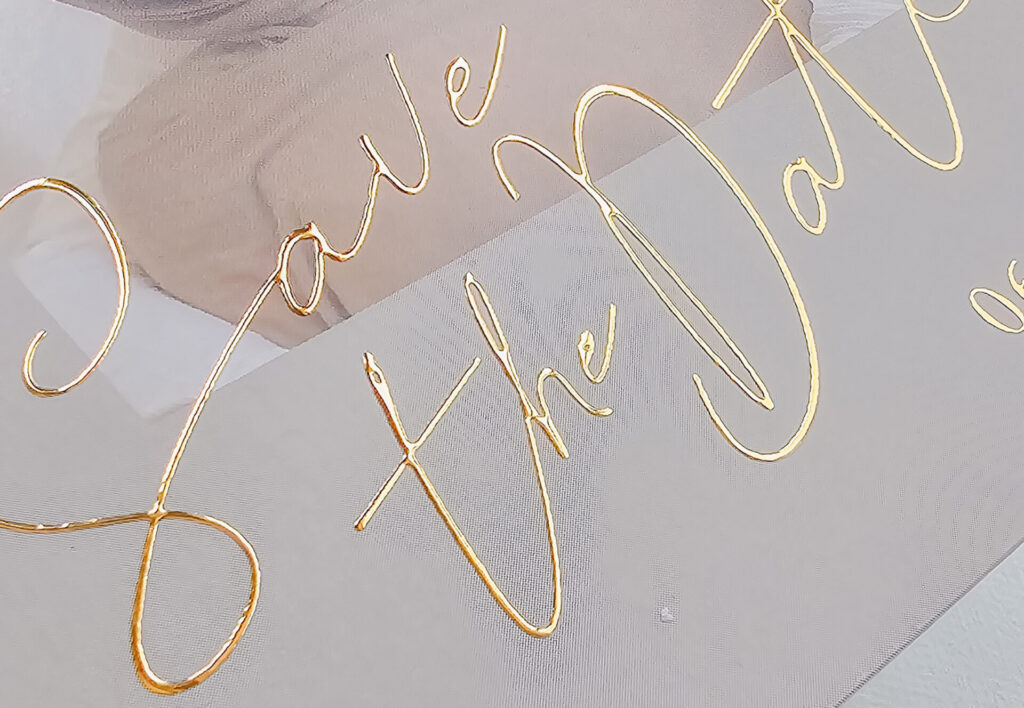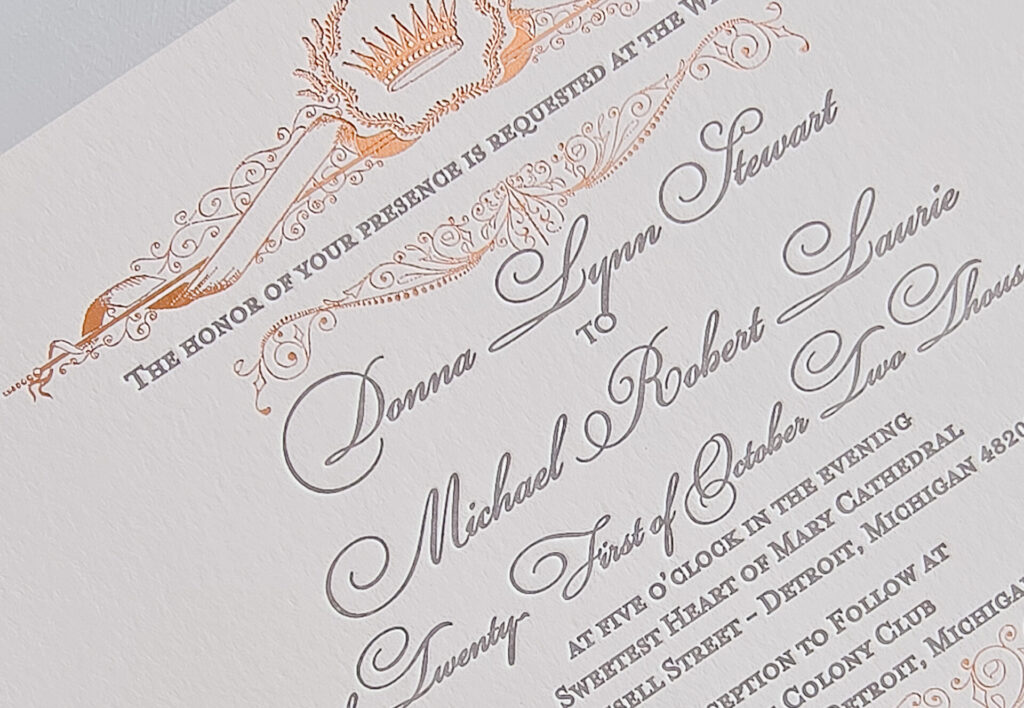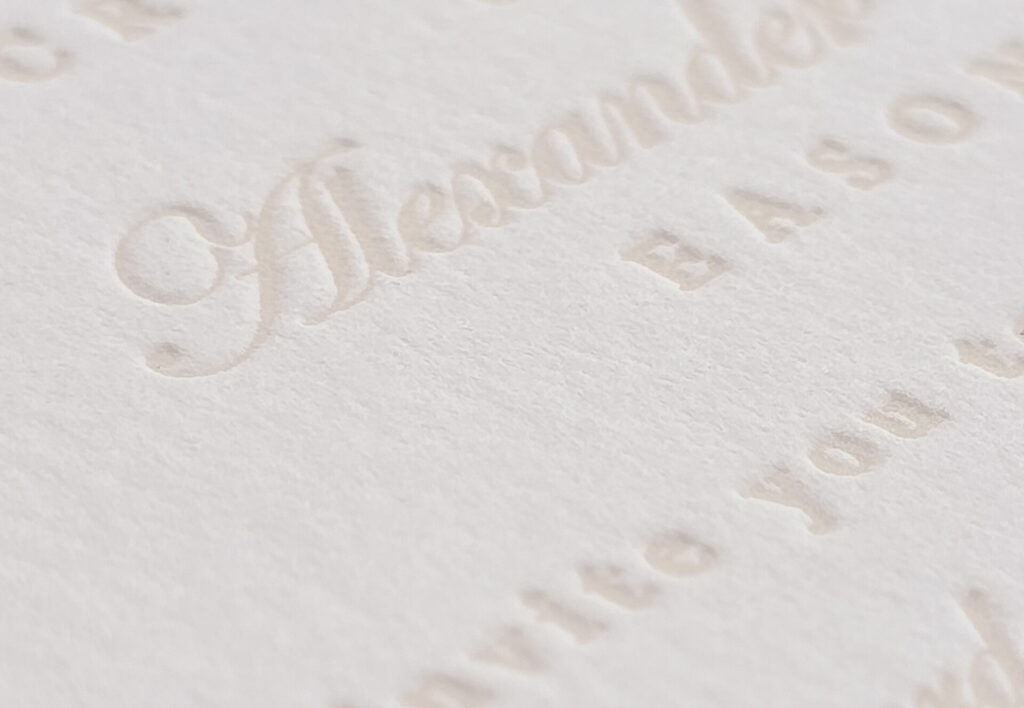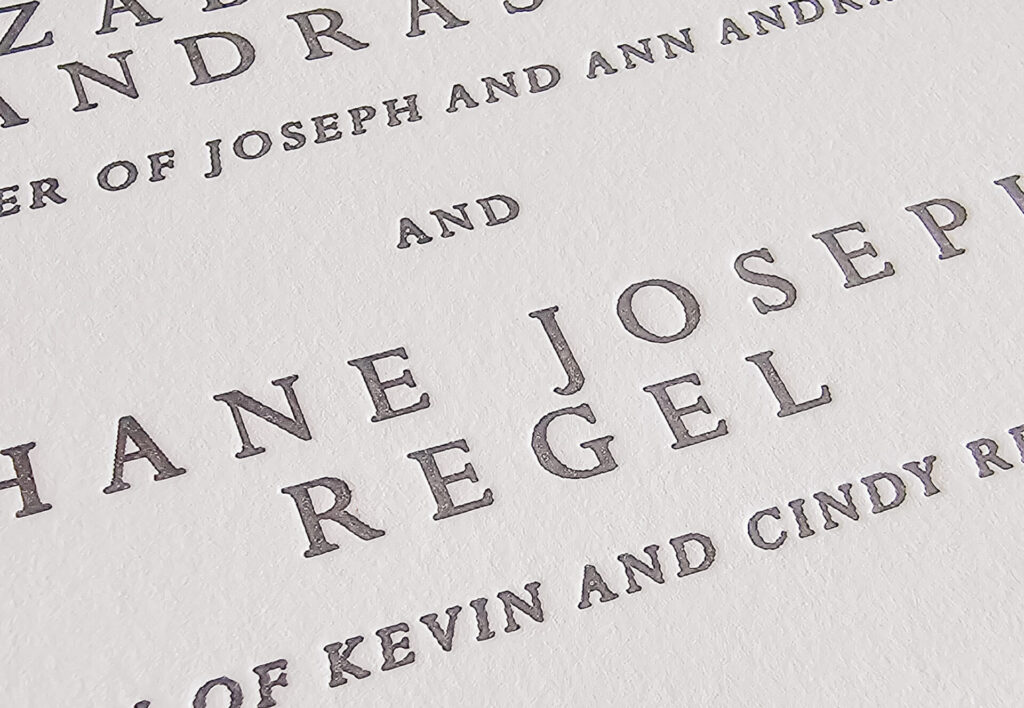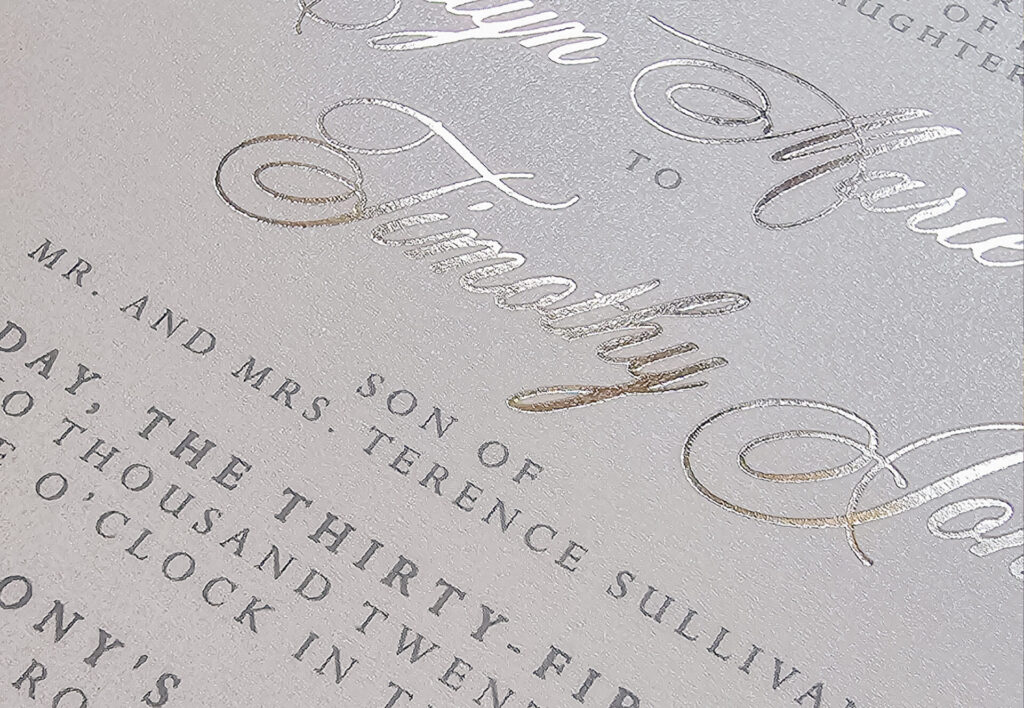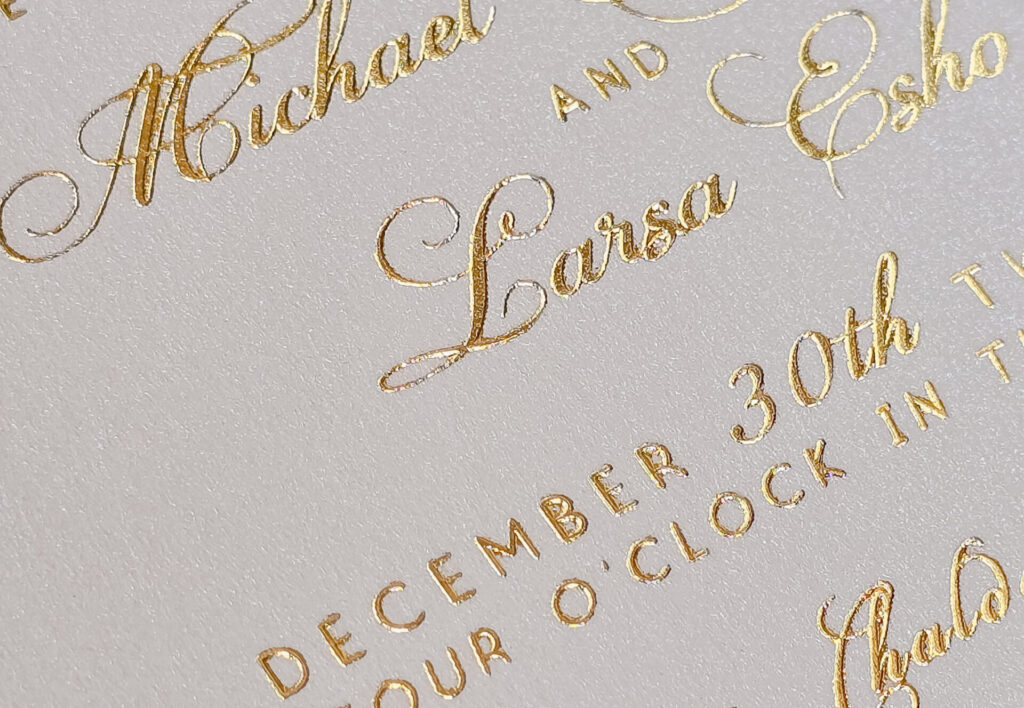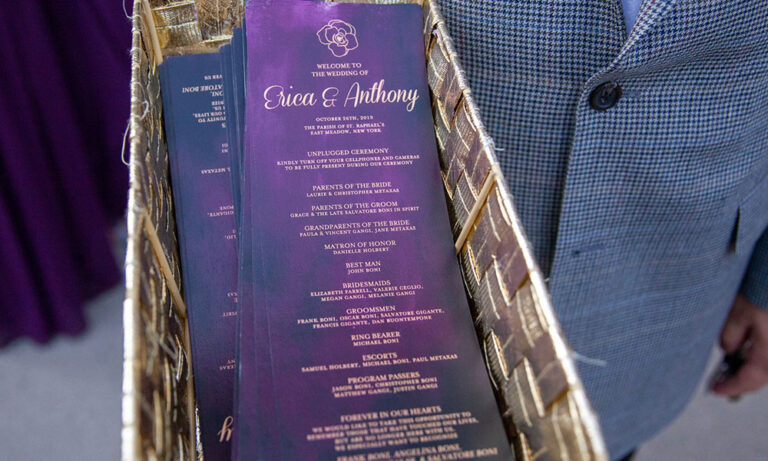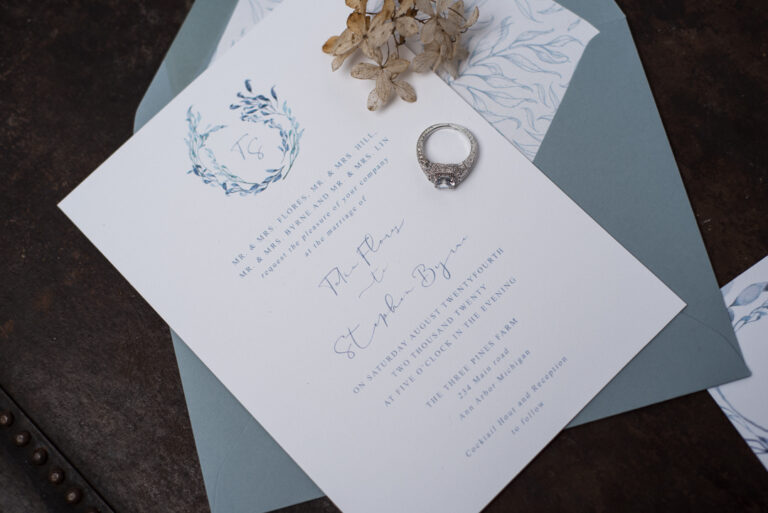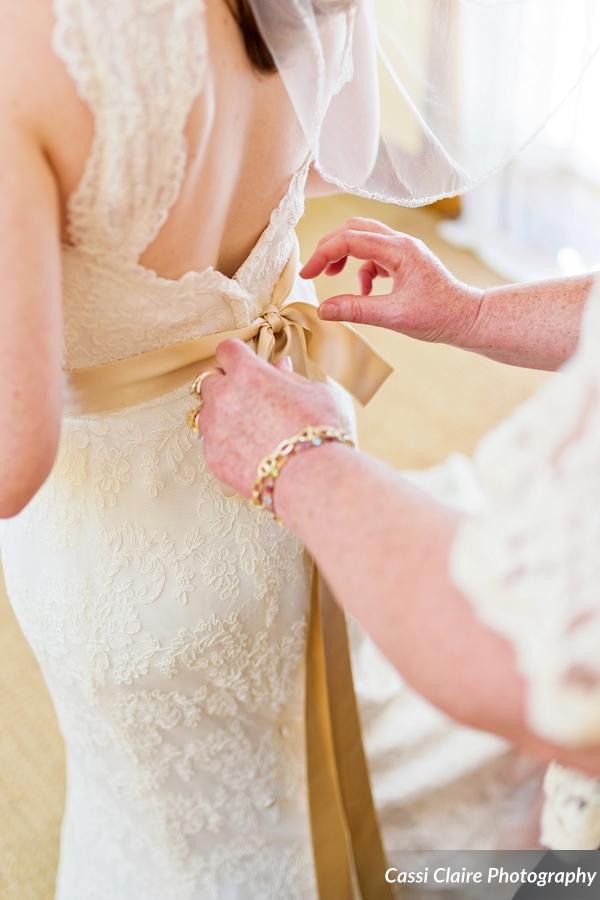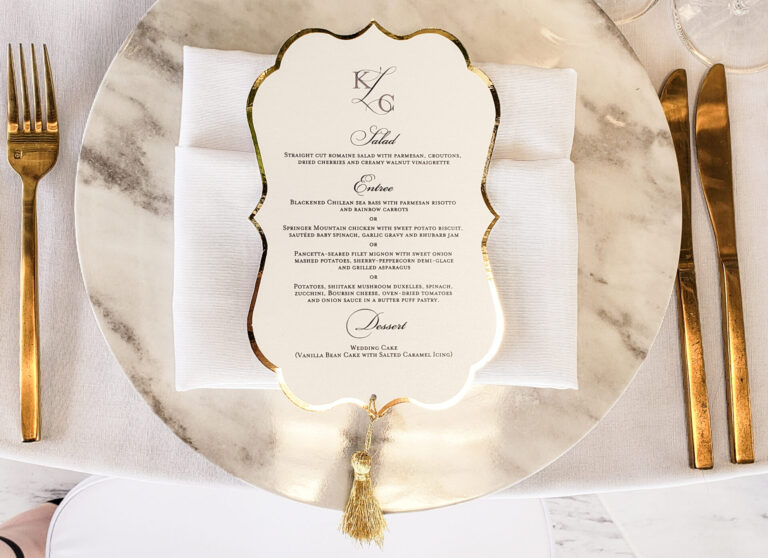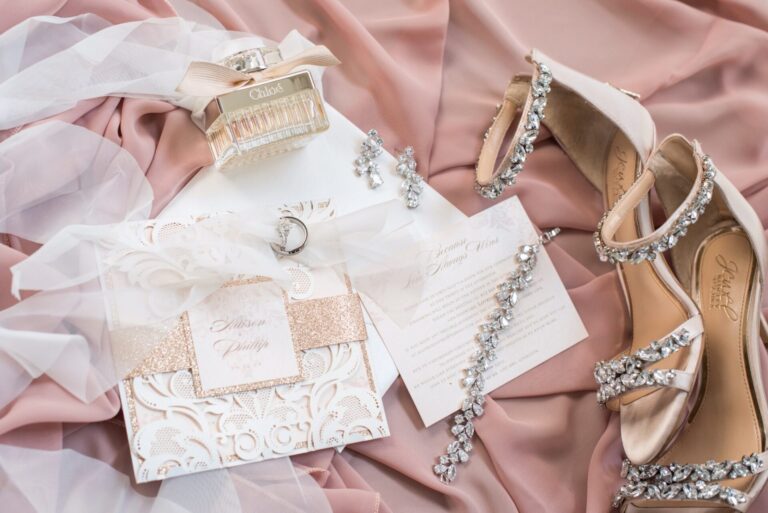A Comprehensive wedding invitation printing guide: Digital Printing, Embossing, Thermography, Letterpress, and Foil Press
Choosing the right printing style for your wedding invitations is essential for capturing your wedding’s aesthetic. Each printing technique has its unique look, feel, and cost, so understanding the details of digital printing, embossing, thermography, letterpress, and foil press can help you make the best choice. Here’s a breakdown of each method to help you determine which one suits your style and budget. Keep reading this wedding invitation printing guide to find out more about the printing methods.
1. Digital Printing
Overview:
Digital printing is a modern, high-speed printing technique that involves directly printing ink onto paper using digital files. Unlike traditional printing, it doesn’t require plates or special setups, which makes it the most affordable option for wedding invitations. Digital printing can reproduce complex designs, vibrant colors, and photographs with ease, making it versatile and accessible.
Best For:
- Couples on a budget
- Invitations with multiple colors, intricate designs, or photographs
- Quick turnaround times
Look and Feel:
Digital printing is flat to the touch, as it doesn’t create raised or textured finishes. The colors can be bold, vibrant, and detailed, depending on the design.
Pros:
- Cost-effective and suitable for larger orders
- Excellent for full-color designs and high-detail images
- Fast production, ideal for tight timelines
Cons:
- No texture; the finish is flat and doesn’t offer the tactile experience of other methods
- Colors may vary depending on the printer quality and paper type
Typical Cost:
Digital printing is generally the most affordable option, costing significantly less per piece than other methods.
2. Embossing
Overview:
Embossing creates a raised design on paper by pressing it between metal plates. This technique gives wedding invitations an elegant, three-dimensional effect that adds sophistication. Embossing is often used to highlight monograms, names, or small design elements rather than full-color images or text.
Best For:
- Classic, formal wedding invitations
- Monograms, borders, and refined accents
- Couples looking for a luxurious, tactile feel
Look and Feel:
Embossed designs are raised and tactile, creating a three-dimensional effect that adds elegance. Embossing is typically colorless, using the paper’s natural shade to create a subtle, textured appearance.
Pros:
- Adds a luxurious and tactile quality to invitations
- Perfect for creating depth without added colors or inks
- Subtle and elegant, ideal for monograms and minimalistic designs
Cons:
- Can be expensive, as it requires custom metal plates
- Not suitable for large areas or detailed designs
Typical Cost:
Embossing costs are higher due to the custom metal plates required, and it is usually priced on a per-piece basis.
3. Thermography
Overview:
Thermography is a heat-based technique that raises the ink on paper, creating a glossy, raised print that resembles engraving but is more cost-effective. The thermographic powder is added to wet ink, which is then heated to create the raised, shiny effect. Thermography is popular for creating elegant invitations without the expense of true engraving.
Best For:
- Formal weddings with classic invitations
- Raised, shiny text or simple designs that stand out
- Cost-effective alternative to engraving
Look and Feel:
Thermography produces a raised, glossy finish that feels slightly textured. It’s typically used for text or line art, providing a refined look with added texture.
Pros:
- More affordable than engraving but with a similar look
- Creates a high-end, raised, glossy effect
- Suitable for formal and traditional invitations
Cons:
- Limited color options (usually darker inks work best)
- Not as durable as engraving; the raised effect can be more prone to wear
Typical Cost:
Thermography is mid-range in cost, often more affordable than letterpress or embossing but pricier than digital printing.
4. Letterpress
Overview:
Letterpress is one of the oldest printing techniques, pressing inked designs into thick paper to create a deep, textured effect. It’s known for its luxurious quality and vintage appeal. Letterpress is often used on heavyweight, high-quality paper and offers a more artisanal, classic feel.
Best For:
- Elegant or vintage-inspired weddings
- Simple, minimalist designs where the texture is the focus
- Those looking for a timeless, high-quality print style
Look and Feel:
Letterpress creates a tactile, indented impression on the paper. The ink is slightly pressed into the paper, resulting in a sophisticated, artisanal look that is both visual and tactile.
Pros:
- Luxurious, timeless appeal with a deep impression
- Works beautifully on thick, textured paper
- Excellent for minimalist or classic designs
Cons:
- Expensive due to custom plates and labor-intensive process
- Limited color options, as additional colors require new plates
Typical Cost:
Letterpress is on the higher end of the pricing scale, as each color requires a separate custom plate, making it one of the most luxurious options.
5. Foil Press
Overview:
Foil press (or foil stamping) uses heat and pressure to apply metallic or pigmented foil onto paper. The result is a shiny, reflective finish that stands out and adds a glamorous touch to invitations. Foil press is often used in gold, silver, rose gold, or copper but can come in a range of colors.
Best For:
- Glamorous or formal weddings
- Adding metallic accents, such as names or borders
- Couples looking for a luxurious, eye-catching effect
Look and Feel:
Foil press creates a shiny, metallic effect that stands out against the paper. It’s reflective and elegant, making it perfect for sophisticated or glamorous designs.
Pros:
- Adds a luxurious, metallic shine that’s hard to achieve with other methods
- Works well with dark or light paper for striking contrast
- Ideal for accenting names, monograms, or borders
Cons:
- Can be costly due to custom metal dies
- Limited to designs that work well with metallic finishes
Typical Cost:
Foil press is one of the pricier options, especially for custom designs, as it requires a custom die for each unique element.
Choosing the Right Method
Each printing method brings a unique aesthetic, so choosing the right one comes down to your budget, wedding theme, and personal style. Here’s a quick summary to help decide:
- Budget-Friendly: Digital printing
- Luxurious and Tactile: Embossing, Letterpress
- Elegant and Glossy: Thermography
- Eye-Catching Metallics: Foil Press
Whether you’re drawn to the luxurious impression of letterpress, the affordability of digital, or the glamor of foil, each option has something special to offer for your wedding invitations.
Wedding Invitation Printing Methods Comparison Table
| Printing Method | Best For | Look and Feel | Pros | Cons | Typical Cost |
|---|---|---|---|---|---|
| Digital Printing | Colorful, detailed designs, photos | Flat, full-color | Affordable, fast production, great for complex designs | No texture, colors vary based on printer quality | Most affordable |
| Embossing | Monograms, borders, minimal designs | Raised, textured, colorless | Adds elegance and texture, perfect for monograms | Expensive, limited to small designs or accents | High, due to custom plates |
| Thermography | Classic, formal invitations | Raised, glossy | Affordable alternative to engraving, elegant for traditional styles | Limited color options, raised effect can wear over time | Mid-range |
| Letterpress | Elegant, vintage styles | Deeply indented, tactile | Luxurious appeal, ideal for minimalist designs on thick paper | Expensive, each color requires a new plate | Higher end |
| Foil Press | Glamorous, luxurious invites | Shiny, reflective metallic finish | Adds metallic shine, great for accents, works well on light or dark paper | Expensive, custom dies required, limited to metallic colors | Among the most expensive |


